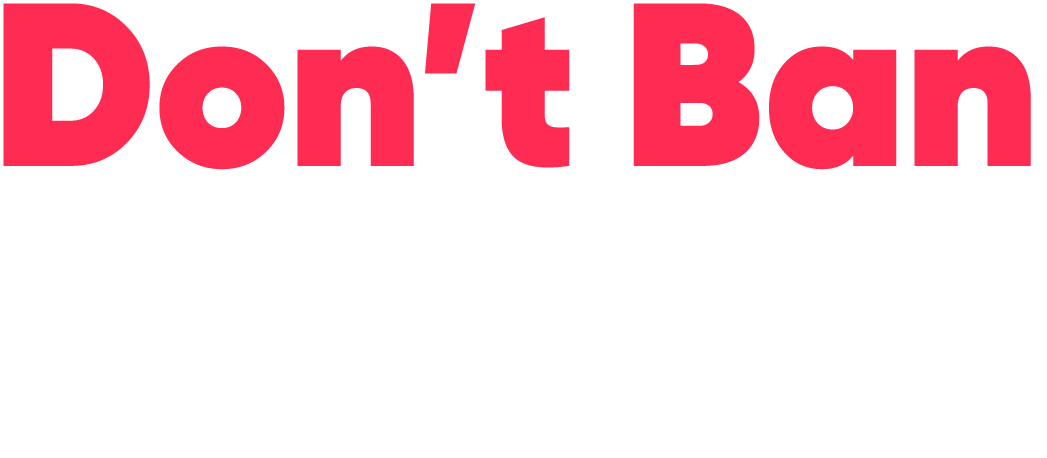
Workforce & Economic Impacts
Where You Do Business Matters: Restricting access to comprehensive reproductive health care affects business efforts to recruit and retain talent, support employees’ access to healthcare, and ensure the well-being of your entire workforce.
The Business Case for Abortion Access
By a margin of 2:1, workers prefer to live in a state where abortion is accessible. This number is even higher for women, young adults, and college students.
76% of current and future doctors would not apply to work in states with abortion restrictions. This shift will impact workforce access to quality healthcare in general.
Nearly 1 in 5 patients must travel out of state for abortion care. Bans create costs and liabilities for employers that support their employees’ access to care.
The Problem
Abortion is now illegal in 12 states, with barriers to care in additional states.
In the year following the Dobbs decision, 26.1 million women of reproductive age were living in a state that eliminated or severely restricted abortion access – a form of healthcare that one in four women may need over the course of their careers.

What Workers Want
Supermajorities of men and women in the U.S. support the right to abortion, regardless of political affiliation.
76% of adults under 30 and 61% of adults in their 30s and 40s believe abortion should be legal.
Workers would prefer to live in a state where abortion is accessible, and this is especially true for younger adults.
Driving away talent
Bans hurt a company’s talent pipeline in states
As of Summer 2025, the extent to which women are making decisions about where to live and work based on abortion bans has been more pronounced than many economists anticipated.
Abortion bans cause significant increases in net migration outflows. The most recent data point indicates that total abortion bans come at the cost of more than 36,000 residents per quarter.
As of January 2025, one in five individuals planning to have children within the next decade has moved–or knows someone who has moved–to another state due to abortion restrictions.
Abortion bans can dry up future talent pipelines, too: 80% of current and prospective college students prefer to attend school in states with greater access to abortion, and 84% of students and 69% of parents do not want students to be without abortion access at college.
The cost of replacing an individual employee can range from 50%-400% of the employee’s annual salary.

People want to work for companies that support abortion rights.
Young people who want families are fleeing ban states and choosing employers that prioritize reproductive healthcare benefits.
76% of working women and 74% of working men under 40 say that they are more likely to work for a company that supports abortion access.
56% of employed adults believe companies should work with lawmakers to protect access to reproductive rights.
Worsening healthcare for the whole workforce
Bans and restrictions on access to reproductive healthcare have created significant healthcare and well-being risks for workers of reproductive age. They are also having the effect of worsening access to healthcare for the entire workforce in a given state.
Over 35% of US counties are maternity care deserts.
Nearly 60% of parents and those planning to have children in the next decade are concerned about access to abortion, OB-GYN services, and prenatal care.
76% of current and future doctors would not apply to work in states with abortion restrictions. State abortion restrictions are also tied to a drop in the OB-GYN workforce. This shift will impact workforce access to quality healthcare in general.
Most Americans (68%) oppose laws that make it illegal to use or receive through the mail FDA-approved drugs for medical abortion, including a majority of Americans across party affiliation.
Mothers living in states that banned abortion are nearly twice as likely to die during pregnancy, childbirth, or soon after giving birth, compared to mothers living in supportive states where abortion was legal and accessible.
Fewer new medical school graduates across specialties, are applying to residency programs in states with abortion bans or restrictions. This reduced influx of doctors to anti-abortion states will impact access to and quality of healthcare for the entire workforce there.
68% of OB/GYNs say that abortion bans have worsened their ability to manage pregnancy-related emergencies, putting pregnant workers – and the pregnant family members of workers – in jeopardy.
Abortion bans are impacting patients and physicians in medical specialties outside of obstetrics and gynecology. Doctors report extreme patient complications and deaths.
States with abortion restrictions have higher infant mortality rates.
Maternal mortality rose 56% in Texas in the first full year of the state’s abortion ban; up 95% among White women.
Complicating business operations, costs, and liabilities
State abortion bans and restrictions are creating new costs, liabilities, and operational concerns for employers that want to support employees’ access to reproductive healthcare.
In 2024, 155,000 people traveled out of state for abortion care, representing 15% of all US abortion patients obtaining care in states without total bans.
Nearly 1 in 5 patients now have to travel out of state for abortion care. Monthly data confirms the number has been increasing since 2022, with some states reporting 70% of their care going to non-residents.
Some state lawmakers have criminalized travel and attempted to punish employers that help their workers access care.
State abortion bans are creating new costs for employers, as well as “murky” legal implications around coverage of workers’ travel costs to obtain an abortion.
Miscarriage care and abortion care rely on the same medicines and medical procedures, and there have been reports in numerous states of women suffering serious health complications because they were denied miscarriage care due to abortion bans.
Some pregnant workers worry about their safety when conducting business travel to a state that bans abortion, and might even forgo business travel for fear that they might experience a miscarriage and need care.
Anti-abortion activists often also support “fetal personhood” laws as part of restricting or banning reproductive healthcare, creating potential liability and costs for employers when their support of IVF for employees clashes with such laws.

There is a clear correlation between abortion restrictions and economic underperformance, from lower GDP to decline in employment to below-average wages. Abortion bans and restrictions not only jeopardize reproductive health but also actively harm state economies.
Hidden Value:
The Business Case For Reproductive Health
The Business Case for Reproductive Health illuminates the link between access to comprehensive reproductive health care and business performance.



